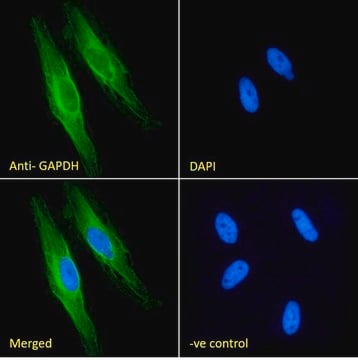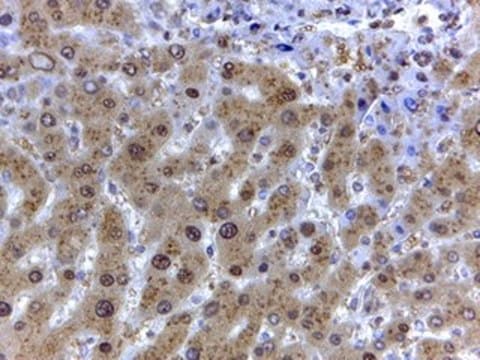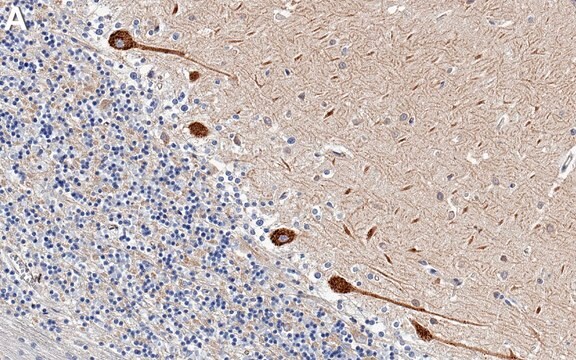PLA0302
Anti-GAPDH Antibody
goat polyclonal
Synonim(y):
G3PD, GAPD, GAPDH, HEL-S-162eP, aging-associated gene 9 protein, epididymis secretory sperm binding protein Li 162eP, peptidyl-cysteine S-nitrosylase GAPDH
Wybierz wielkość
2130,00 zł
Wybierz wielkość
About This Item
2130,00 zł
Polecane produkty
Nazwa produktu
Goat anti-GAPDH Antibody, Affinity Purified, Powered by Bethyl Laboratories, Inc.
pochodzenie biologiczne
goat
Poziom jakości
forma przeciwciała
affinity purified immunoglobulin
rodzaj przeciwciała
primary antibodies
klasa czystości
Powered by Bethyl Laboratories, Inc.
reaktywność gatunkowa
human, mouse
stężenie
1 mg/mL
metody
immunohistochemistry: 1:500-1:2,000
western blot: 1:500- 1:2,500
nr dostępu
NP_002037.2
numer dostępu UniProt
Warunki transportu
wet ice
temp. przechowywania
2-8°C
docelowa modyfikacja potranslacyjna
unmodified
informacje o genach
goat ... GAPDH(2597)
Immunogen
Postać fizyczna
Inne uwagi
Oświadczenie o zrzeczeniu się odpowiedzialności
Nie możesz znaleźć właściwego produktu?
Wypróbuj nasz Narzędzie selektora produktów.
Kod klasy składowania
12 - Non Combustible Liquids
Klasa zagrożenia wodnego (WGK)
nwg
Temperatura zapłonu (°F)
Not applicable
Temperatura zapłonu (°C)
Not applicable
Wybierz jedną z najnowszych wersji:
Certyfikaty analizy (CoA)
Nie widzisz odpowiedniej wersji?
Jeśli potrzebujesz konkretnej wersji, możesz wyszukać konkretny certyfikat według numeru partii lub serii.
Masz już ten produkt?
Dokumenty związane z niedawno zakupionymi produktami zostały zamieszczone w Bibliotece dokumentów.
Active Filters
Nasz zespół naukowców ma doświadczenie we wszystkich obszarach badań, w tym w naukach przyrodniczych, materiałoznawstwie, syntezie chemicznej, chromatografii, analityce i wielu innych dziedzinach.
Skontaktuj się z zespołem ds. pomocy technicznej






